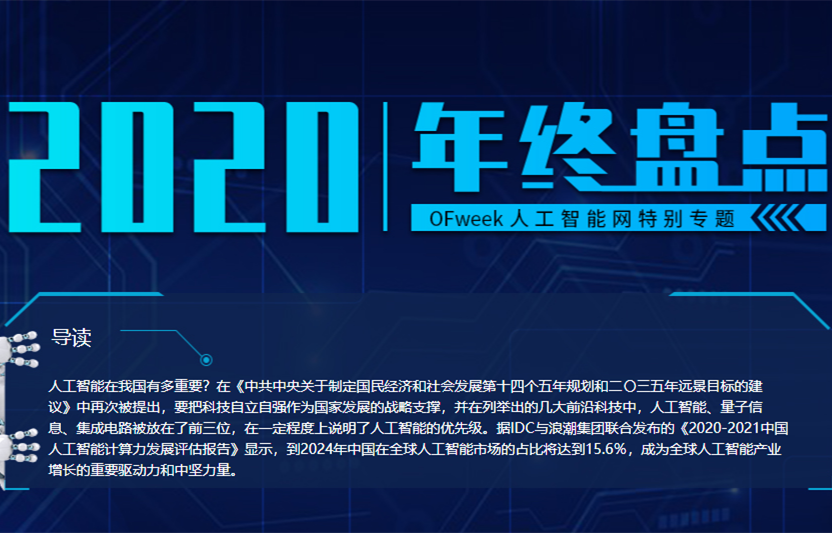detectron2系列:config软件包
配置参考
# -----------------------------------------------------------------------------
# Convention about Training / Test specific parameters
# -----------------------------------------------------------------------------
# Whenever an argument can be either used for training or for testing, the
# corresponding name will be post-fixed by a _TRAIN for a training parameter,
# or _TEST for a test-specific parameter.
# For example, the number of images during training will be
# IMAGES_PER_BATCH_TRAIN, while the number of images for testing will be
# IMAGES_PER_BATCH_TEST
# -----------------------------------------------------------------------------
# Config definition
# -----------------------------------------------------------------------------
_C = CN()
# The version number, to upgrade from old configs to new ones if any
# changes happen. It's recommended to keep a VERSION in your config file.
_C.VERSION = 2
_C.MODEL = CN()
_C.MODEL.LOAD_PROPOSALS = False
_C.MODEL.MASK_ON = False
_C.MODEL.KEYPOINT_ON = False
_C.MODEL.DEVICE = "cuda"
_C.MODEL.META_ARCHITECTURE = "GeneralizedRCNN"
# Path (possibly with schema like catalog:// or detectron2://) to a checkpoint file
# to be loaded to the model. You can find available models in the model zoo.
_C.MODEL.WEIGHTS = ""
# Values to be used for image normalization (BGR order, since INPUT.FORMAT defaults to BGR).
# To train on images of different number of channels, just set different mean & std.
# Default values are the mean pixel value from ImageNet: [103.53, 116.28, 123.675]
_C.MODEL.PIXEL_MEAN = [103.530, 116.280, 123.675]
# When using pre-trained models in Detectron1 or any MSRA models,
# std has been absorbed into its conv1 weights, so the std needs to be set 1.
# Otherwise, you can use [57.375, 57.120, 58.395] (ImageNet std)
_C.MODEL.PIXEL_STD = [1.0, 1.0, 1.0]
# -----------------------------------------------------------------------------
# INPUT
# -----------------------------------------------------------------------------
_C.INPUT = CN()
# Size of the smallest side of the image during training
_C.INPUT.MIN_SIZE_TRAIN = (800,)
# Sample size of smallest side by choice or random selection from range give by
# INPUT.MIN_SIZE_TRAIN
_C.INPUT.MIN_SIZE_TRAIN_SAMPLING = "choice"
# Maximum size of the side of the image during training
_C.INPUT.MAX_SIZE_TRAIN = 1333
# Size of the smallest side of the image during testing. Set to zero to disable resize in testing.
_C.INPUT.MIN_SIZE_TEST = 800
# Maximum size of the side of the image during testing
_C.INPUT.MAX_SIZE_TEST = 1333
# `True` if cropping is used for data augmentation during training
_C.INPUT.CROP = CN({"ENABLED": False})
# Cropping type:
# - "relative" crop (H * CROP.SIZE[0], W * CROP.SIZE[1]) part of an input of size (H, W)
# - "relative_range" uniformly sample relative crop size from between [CROP.SIZE[0], [CROP.SIZE[1]].
# and [1, 1] and use it as in "relative" scenario.
# - "absolute" crop part of an input with absolute size: (CROP.SIZE[0], CROP.SIZE[1]).
_C.INPUT.CROP.TYPE = "relative_range"
# Size of crop in range (0, 1] if CROP.TYPE is "relative" or "relative_range" and in number of
# pixels if CROP.TYPE is "absolute"
_C.INPUT.CROP.SIZE = [0.9, 0.9]
# Whether the model needs RGB, YUV, HSV etc.
# Should be one of the modes defined here, as we use PIL to read the image:
# https://pillow.readthedocs.io/en/stable/handbook/concepts.html#concept-modes
# with BGR being the one exception. One can set image format to BGR, we will
# internally use RGB for conversion and flip the channels over
_C.INPUT.FORMAT = "BGR"
# The ground truth mask format that the model will use.
# Mask R-CNN supports either "polygon" or "bitmask" as ground truth.
_C.INPUT.MASK_FORMAT = "polygon" # alternative: "bitmask"
# -----------------------------------------------------------------------------
# Dataset
# -----------------------------------------------------------------------------
_C.DATASETS = CN()
# List of the dataset names for training. Must be registered in DatasetCatalog
_C.DATASETS.TRAIN = ()
# List of the pre-computed proposal files for training, which must be consistent
# with datasets listed in DATASETS.TRAIN.
_C.DATASETS.PROPOSAL_FILES_TRAIN = ()
# Number of top scoring precomputed proposals to keep for training
_C.DATASETS.PRECOMPUTED_PROPOSAL_TOPK_TRAIN = 2000
# List of the dataset names for testing. Must be registered in DatasetCatalog
_C.DATASETS.TEST = ()
# List of the pre-computed proposal files for test, which must be consistent
# with datasets listed in DATASETS.TEST.
_C.DATASETS.PROPOSAL_FILES_TEST = ()
# Number of top scoring precomputed proposals to keep for test
_C.DATASETS.PRECOMPUTED_PROPOSAL_TOPK_TEST = 1000
# -----------------------------------------------------------------------------
# DataLoader
# -----------------------------------------------------------------------------
_C.DATALOADER = CN()
# Number of data loading threads
_C.DATALOADER.NUM_WORKERS = 4
# If True, each batch should contain only images for which the aspect ratio
# is compatible. This groups portrait images together, and landscape images
# are not batched with portrait images.
_C.DATALOADER.ASPECT_RATIO_GROUPING = True
# Options: TrainingSampler, RepeatFactorTrainingSampler
_C.DATALOADER.SAMPLER_TRAIN = "TrainingSampler"
# Repeat threshold for RepeatFactorTrainingSampler
_C.DATALOADER.REPEAT_THRESHOLD = 0.0
# if True, the dataloader will filter out images that have no associated
# annotations at train time.
_C.DATALOADER.FILTER_EMPTY_ANNOTATIONS = True
# ---------------------------------------------------------------------------- #
# Backbone options
# ---------------------------------------------------------------------------- #
_C.MODEL.BACKBONE = CN()
_C.MODEL.BACKBONE.NAME = "build_resnet_backbone"
# Freeze the first several stages so they are not trained.
# There are 5 stages in ResNet. The first is a convolution, and the following
# stages are each group of residual blocks.
_C.MODEL.BACKBONE.FREEZE_AT = 2
# ---------------------------------------------------------------------------- #
# FPN options
# ---------------------------------------------------------------------------- #
_C.MODEL.FPN = CN()
# Names of the input feature maps to be used by FPN
# They must have contiguous power of 2 strides
# e.g., ["res2", "res3", "res4", "res5"]
_C.MODEL.FPN.IN_FEATURES = []
_C.MODEL.FPN.OUT_CHANNELS = 256
# Options: "" (no norm), "GN"
_C.MODEL.FPN.NORM = ""
# Types for fusing the FPN top-down and lateral features. Can be either "sum" or "avg"
_C.MODEL.FPN.FUSE_TYPE = "sum"
# ---------------------------------------------------------------------------- #
# Proposal generator options
# ---------------------------------------------------------------------------- #
_C.MODEL.PROPOSAL_GENERATOR = CN()
# Current proposal generators include "RPN", "RRPN" and "PrecomputedProposals"
_C.MODEL.PROPOSAL_GENERATOR.NAME = "RPN"
# Proposal height and width both need to be greater than MIN_SIZE
# (a the scale used during training or inference)
_C.MODEL.PROPOSAL_GENERATOR.MIN_SIZE = 0
# ---------------------------------------------------------------------------- #
# Anchor generator options
# ---------------------------------------------------------------------------- #
_C.MODEL.ANCHOR_GENERATOR = CN()
# The generator can be any name in the ANCHOR_GENERATOR registry
_C.MODEL.ANCHOR_GENERATOR.NAME = "DefaultAnchorGenerator"
# Anchor sizes (i.e. sqrt of area) in absolute pixels w.r.t. the network input.
# Format: list[list[int]]. SIZES[i] specifies the list of sizes
# to use for IN_FEATURES[i]; len(SIZES) == len(IN_FEATURES) must be true,
# or len(SIZES) == 1 is true and size list SIZES[0] is used for all
# IN_FEATURES.
_C.MODEL.ANCHOR_GENERATOR.SIZES = [[32, 64, 128, 256, 512]]
# Anchor aspect ratios. For each area given in `SIZES`, anchors with different aspect
# ratios are generated by an anchor generator.
# Format: list[list[int]]. ASPECT_RATIOS[i] specifies the list of aspect ratios
# to use for IN_FEATURES[i]; len(ASPECT_RATIOS) == len(IN_FEATURES) must be true,
# or len(ASPECT_RATIOS) == 1 is true and aspect ratio list ASPECT_RATIOS[0] is used
# for all IN_FEATURES.
_C.MODEL.ANCHOR_GENERATOR.ASPECT_RATIOS = [[0.5, 1.0, 2.0]]
# Anchor angles.
# list[float], the angle in degrees, for each input feature map.
# ANGLES[i] specifies the list of angles for IN_FEATURES[i].
_C.MODEL.ANCHOR_GENERATOR.ANGLES = [[-90, 0, 90]]
# Relative offset between the center of the first anchor and the top-left corner of the image
# Units: fraction of feature map stride (e.g., 0.5 means half stride)
# Allowed values are floats in [0, 1) range inclusive.
# Recommended value is 0.5, although it is not expected to affect model accuracy.
_C.MODEL.ANCHOR_GENERATOR.OFFSET = 0.0
# ---------------------------------------------------------------------------- #
# RPN options
# ---------------------------------------------------------------------------- #
_C.MODEL.RPN = CN()
_C.MODEL.RPN.HEAD_NAME = "StandardRPNHead" # used by RPN_HEAD_REGISTRY
# Names of the input feature maps to be used by RPN
# e.g., ["p2", "p3", "p4", "p5", "p6"] for FPN
_C.MODEL.RPN.IN_FEATURES = ["res4"]
# Remove RPN anchors that go outside the image by BOUNDARY_THRESH pixels
# Set to -1 or a large value, e.g. 100000, to disable pruning anchors
_C.MODEL.RPN.BOUNDARY_THRESH = -1
# IOU overlap ratios [BG_IOU_THRESHOLD, FG_IOU_THRESHOLD]
# Minimum overlap required between an anchor and ground-truth box for the
# (anchor, gt box) pair to be a positive example (IoU >= FG_IOU_THRESHOLD
# ==> positive RPN example: 1)
# Maximum overlap allowed between an anchor and ground-truth box for the
# (anchor, gt box) pair to be a negative examples (IoU < BG_IOU_THRESHOLD
# ==> negative RPN example: 0)
# Anchors with overlap in between (BG_IOU_THRESHOLD <= IoU < FG_IOU_THRESHOLD)
# are ignored (-1)
_C.MODEL.RPN.IOU_THRESHOLDS = [0.3, 0.7]
_C.MODEL.RPN.IOU_LABELS = [0, -1, 1]
# Total number of RPN examples per image
_C.MODEL.RPN.BATCH_SIZE_PER_IMAGE = 256
# Target fraction of foreground (positive) examples per RPN minibatch
_C.MODEL.RPN.POSITIVE_FRACTION = 0.5
# Weights on (dx, dy, dw, dh) for normalizing RPN anchor regression targets
_C.MODEL.RPN.BBOX_REG_WEIGHTS = (1.0, 1.0, 1.0, 1.0)
# The transition point from L1 to L2 loss. Set to 0.0 to make the loss simply L1.
_C.MODEL.RPN.SMOOTH_L1_BETA = 0.0
_C.MODEL.RPN.LOSS_WEIGHT = 1.0
# Number of top scoring RPN proposals to keep before applying NMS
# When FPN is used, this is *per FPN level* (not total)
_C.MODEL.RPN.PRE_NMS_TOPK_TRAIN = 12000
_C.MODEL.RPN.PRE_NMS_TOPK_TEST = 6000
# Number of top scoring RPN proposals to keep after applying NMS
# When FPN is used, this limit is applied per level and then again to the union
# of proposals from all levels
# NOTE: When FPN is used, the meaning of this config is different from Detectron1.
# It means per-batch topk in Detectron1, but per-image topk here.
# See "modeling/rpn/rpn_outputs.py" for details.
_C.MODEL.RPN.POST_NMS_TOPK_TRAIN = 2000
_C.MODEL.RPN.POST_NMS_TOPK_TEST = 1000
# NMS threshold used on RPN proposals
_C.MODEL.RPN.NMS_THRESH = 0.7
# ---------------------------------------------------------------------------- #

最新活动更多
-
3月27日立即报名>> 【工程师系列】汽车电子技术在线大会
-
即日-4.22立即报名>> 【在线会议】汽车腐蚀及防护的多物理场仿真
-
4月23日立即报名>> 【在线会议】研华嵌入式核心优势,以Edge AI驱动机器视觉升级
-
4月25日立即报名>> 【线下论坛】新唐科技2025新品发布会
-
在线会议观看回放>>> AI加速卡中村田的技术创新与趋势探讨
-
即日-5.15立即报名>>> 【在线会议】安森美Hyperlux™ ID系列引领iToF技术革新











 分享
分享















发表评论
请输入评论内容...
请输入评论/评论长度6~500个字
暂无评论
暂无评论